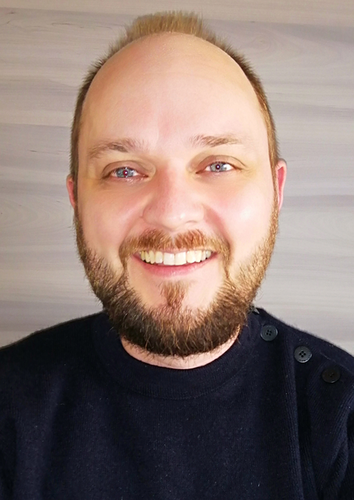Morgan Donnard
Graphical Abstract
“My favorite science outreach activity is meeting with young people at science fairs to answer the questions they have about the world around them (not always easy to answer but often inspiring) … I chose chemistry as a career because you transform and model matter at the scale of the molecule, a scale imperceptible to human beings until very recently in our history. …” Find out more about Morgan Donnard in his Introducing … Profile.
Morgan Donnard
The author presented on this page has published his first article as a submitting corresponding author in Angewandte Chemie:
“Palladium-Catalyzed Silylcyanation of Ynamides: Regio- and Stereoselective Access to Tetrasubstituted 3-Silyl-2-Aminoacrylonitriles”: P. Hansjacob, F. R. Leroux, V. Gandon, M. Donnard, Angew. Chem. Int. Ed. 2022, doi.org/10.1002/anie.202200204; Angew. Chem. 2022, doi.org/10.1002/ange.202200204.
-
Position:
-
Senior Researcher at CNRS – University of Strasbourg
-
Homepage:
-
-
ORCID:
-
-
Education:
-
2005 MSc, University of Strasbourg (France)
2008 PhD with Jacques Eustache, ENSCMu, Mulhouse (France)
2009–2010 Postdoc with Jonathan Clayden, University of Manchester (UK)
2011–2012 Postdoc with Nicolas Blanchard, ENSCMu, Mulhouse (France)
-
Research:
-
Heterocycles; domino reactions; ynamide/enamide; organosilicon chemistry
-
Hobbies:
-
Cycling, hiking, reading, watching movies
I am waiting for the day when someone will discover other forms of life in the universe.
The biggest challenge facing my generation of scientists is to make the most of new technologies (AI, automation, etc…) to push further the limits of knowledge.
The greatest scientific advance of the last decade was the development of CRISPR/CAS9 and the incredible prospects for associated therapies.
My favorite example of chemistry/science in everyday life is the extraction of caffeine that I perform every morning to prepare my daily fuel.
Modern science needs to focus on environmental issues and energy management.
I chose chemistry as a career because you transform and model matter at the scale of the molecule, a scale imperceptible to human beings until very recently in our history.
The most important factor in the choice of my current research topic was to build in a controlled way the most functionalized small molecules possible to offer building blocks of the “Swiss knife” type.
Young professors / group leaders / principal investigators are not prepared for administrative overload and fundraising.
In five years, I hope to be even more excited about the discoveries we will make in the team.
I recharge my batteries by spending time with my family and cycling in the beautiful Alsatian countryside.
My biggest motivation is to finish my day having learned something that I did not know in the morning.
I celebrate success by drinking a flute of champagne from my uncle's vineyard with family and friends.
My favorite science outreach activity is meeting with young people at science fairs to answer the questions they have about the world around them (not always easy to answer but often inspiring).
My favorite band is Oasis (If you′ve been a Mancunian once, you′ll be one forever.).
My favorite saying/quote is “One day in the library can save you a week in the lab, in the same way, one week in the lab can save you a day in the library”.
Behind the Science
In studying selective carbosilylations of ynamides as a direct tool to obtain polyfunctionalized captodative enamides, we discovered this practical and efficient silylcyanation leading to tetrasubstituted 2-amino-acrylonitriles. During the investigations, surprisingly, Pierre Hansjacob (the first author) discovered that the nature of the substituent on the alkyne (aryl/alkene vs alkyl) completely reversed the stereoselectivity of the reaction. To understand the origin of this selectivity, we contacted our colleague Vincent Gandon for his expertise in theoretical chemistry. With our two teams, by combining experimental studies and computational investigations, we were able to propose a coherent explanation described in the article.





